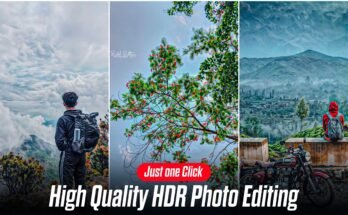With the continuous evolution of mobile photography, iPhone photo editing tools have gained immense popularity due to their advanced features and user-friendly interface. Many Android users, however, desire similar high-quality photo editing capabilities that are often seen on iPhones. This article explores how Android users can get iPhone Photo Editing functionality on their devices, detailing the available methods, tools, pros, cons, and alternatives.
What is Get iPhone Photo Editing on Android?
iPhone Photo Editing on Android refers to replicating or obtaining the same photo editing capabilities available on iPhone devices on Android phones. iPhone photo editing tools are known for their seamless performance, high-quality effects, and user-friendly design, often found in native apps like Photos or third-party applications such as VSCO, Snapseed, and Adobe Lightroom.
Key Points:
- Definition: Accessing iPhone-style editing tools and apps on Android devices.
- Popularity: iPhone editing apps are renowned for their precision, ease of use, and output quality.
- Goal: Achieve similar results with Android photo editing apps that mirror iPhone’s editing capabilities.
How Get iPhone Photo Editing on Android Works
To get iPhone-like Photo Editing on Android, users can either use photo editing apps available on both iOS and Android, or find Android-specific apps that mimic iPhone’s native editing features. There are several ways to achieve this:
Methods to Get iPhone Photo Editing on Android:
- Cross-Platform Photo Editing Apps:
- Apps such as VSCO, Snapseed, Lightroom, and PicsArt are available on both iOS and Android. These apps offer iPhone-level photo editing quality and performance on Android devices.
- iPhone-Style Photo Editing Apps for Android:
- Some Android apps are designed specifically to replicate the interface and functionality of iPhone’s native photo editing tools. Examples include Camera+, Afterlight, and Darkroom.
- Customizing Android’s Built-In Photo Editing Tools:
- Many Android devices come with powerful photo editing tools. By tweaking settings and installing additional filter packs, you can achieve an iPhone-like editing experience.
- Third-Party iPhone Emulator Apps:
- Though rare, there are apps and APKs that emulate iPhone photo editing software on Android, allowing users to access iPhone-specific features.
Features of Get iPhone Photo Editing on Android [Completely Detailing]
1. Advanced Filters and Effects
- One of the main features of iPhone photo editing apps is the wide array of filters and effects that allow users to transform photos instantly. Apps on Android, such as VSCO and Snapseed, offer a variety of filters that closely resemble those found on iPhone.
2. Portrait Mode Editing
- iPhone’s portrait mode allows users to create a blurred background (bokeh effect). Android apps like PicsArt and Lightroom offer similar tools to adjust depth of field and apply realistic bokeh effects.
3. AI-Powered Enhancements
- Many iPhone editing tools leverage AI to enhance images automatically. Android apps like Google Photos and Adobe Photoshop Express also provide one-tap AI-powered enhancements that improve brightness, contrast, and color balance.
4. RAW Editing Support
- iPhones support RAW photo editing, a feature critical for photographers who want maximum control over their images. Android apps such as Lightroom and Snapseed support RAW file editing, ensuring high-quality adjustments.
5. Precision Adjustment Tools
- iPhone’s editing apps allow precise control over exposure, contrast, saturation, shadows, and more. Android users can access similar precision editing tools through apps like Pixlr, Photo Editor Pro, and Polarr.
6. Healing and Retouching Tools
- The ability to remove blemishes or unwanted objects from a photo is a standout feature on iPhone editing tools. Android alternatives such as TouchRetouch and Facetune offer similar retouching capabilities.
7. Non-Destructive Editing
- Non-destructive editing allows users to revert to the original image at any time. Android apps like Lightroom and Google Photos offer non-destructive editing, ensuring that users can always go back to the unedited version.
8. Batch Editing
- Many iPhone apps offer batch editing, allowing users to apply the same filters and adjustments to multiple photos at once. Android apps like Lightroom and PhotoDirector also offer this feature, making bulk photo editing efficient.
9. Easy Sharing and Export Options
- Just like iPhones, Android apps provide multiple export options, allowing users to share photos directly on social media platforms such as Instagram, Facebook, and WhatsApp.
10. iPhone-like User Interface
- Some Android apps, like Afterlight, replicate the iPhone’s intuitive photo editing interface, making the transition for users switching from iOS to Android smoother.
Pros of Get iPhone Photo Editing on Android [Use Table]
| Pros | Description |
|---|---|
| Cross-Platform Compatibility | Many apps are available on both iOS and Android, providing consistent editing experiences. |
| Advanced Features | Android apps offer similar advanced editing features, like portrait mode, RAW editing, and AI enhancements. |
| Cost-Effective | Many high-quality Android editing apps are free or offer cheaper premium options than iPhone apps. |
| Customizable Interface | Android apps allow more customization, giving users control over how their editing tools are arranged. |
| High-Resolution Exports | Android apps offer high-quality output similar to iPhone apps, suitable for professional usage. |
| Access to More Features | Android apps often provide more features, such as file management and app integration, than iPhone apps. |
Cons of Get iPhone Photo Editing on Android [Use Table]
| Cons | Description |
|---|---|
| Inconsistent UI Experience | iPhone apps tend to offer a more polished and seamless user interface than some Android counterparts. |
| Limited Native Tools | Android’s built-in editing tools may not always match the quality and ease of use of iPhone’s native tools. |
| Software Fragmentation | Different Android devices have different photo editing software, leading to varying experiences. |
| Learning Curve | Users may face a learning curve when switching from iPhone to Android, especially when navigating new editing apps. |
| Fewer Exclusive Apps | Some photo editing apps and features are exclusive to iPhones, limiting access for Android users. |
| Battery Drain on Heavy Usage | Advanced editing apps may consume more battery on Android devices than on iPhones. |
Get iPhone Photo Editing on Android Alternatives [Use Table]
| Alternative | Description |
|---|---|
| Snapseed | A powerful Google-owned photo editor with advanced tools and intuitive UI, available on both iOS and Android. |
| VSCO | Known for its professional-grade filters and easy-to-use interface, it offers cross-platform compatibility. |
| Adobe Lightroom | Ideal for professional photographers, Lightroom offers RAW editing and cloud sync across devices. |
| PicsArt | A feature-rich app that provides creative editing tools, including filters, effects, and portrait mode. |
| Afterlight | A popular iPhone-style editing app available on Android, offering sleek editing tools and interface. |
| Polarr | An advanced photo editor that offers pro-level features, including layers and masking, on both iOS and Android. |
Conclusion and Verdict on Get iPhone Photo Editing on Android
Getting iPhone Photo Editing on Android is not only possible but can offer a comparable experience if you know which apps to use. With cross-platform apps like Snapseed, VSCO, and Adobe Lightroom, Android users can enjoy iPhone-level photo editing capabilities with similar precision, ease of use, and high-quality output. Additionally, Android’s versatility allows for more customization, which can enhance the editing experience even further.
Verdict:
- Best suited for: Users looking for professional-level photo editing features on Android.
- Not suited for: Users who are highly accustomed to iPhone’s native photo editing tools and interface may find the switch to Android apps challenging.
In conclusion, while iPhone photo editing tools have their distinct appeal, Android users can replicate most of these features using high-quality apps. Whether you’re a professional photographer or someone who enjoys editing on the go, there’s an Android app to meet your needs.
FAQs Get iPhone Photo Editing on Android
1. Can Android apps match the quality of iPhone photo editing?
Yes, many Android apps like Snapseed and Lightroom offer similar quality and features as iPhone photo editing apps.
2. What is the best app to replicate iPhone’s portrait mode on Android?
Apps like PicsArt and Google Camera provide excellent portrait mode functionality on Android.
3. Are there free Android apps with iPhone-like photo editing features?
Yes, apps like Snapseed, Polarr, and VSCO offer free versions with powerful editing features similar to iPhone apps.
4. Is it possible to get iPhone’s native photo editing tools on Android?
While it’s not possible to get iPhone’s native photo editing tools directly, apps like Snapseed and VSCO provide similar functionality.
5. Do Android photo editing apps support RAW files like iPhones?
Yes, many Android apps such as Lightroom and Snapseed support RAW file editing, providing professional-level control.




